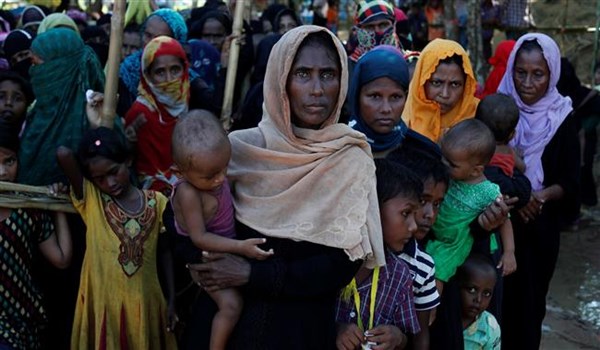
RNA - The six-page report, compiled by the UN food agency in July, voiced alarm over severe hunger among Rohingya Muslims in Myanmar’s Rakhine State, saying more than 80,000 children under the age of five “wasting” due to rapid weight loss, The Guardian reported on Tuesday.
The report was, however, withdrawn from the WFP’s website “following a request by the government to conduct a joint review.”
The document was then replaced with a statement, saying Myanmar and the WFP were “collaborating on a revised version,” and that the initial report should not be cited in any way.
The UN food aid agency later noted that, the “WFP stands by its original assessment, which was conducted jointly with local authorities in Rakhine state … However WFP recognizes that in a dynamic and evolving situation, it is important to coordinate closely with all partners, including the government.”
Speaking on condition of anonymity, a consultant with the UN’s Myanmar office said the WFP’s in-country team was already seriously concerned about the report getting too much attention.
The assessment indicated that controversial WFP food aid cuts to internally displaced Rohingya over the previous two years had left people in dire need of help, according to the consultant.
“They knew it was potentially damaging. It was all to do with the fact that internally, there was a belief that the decision made to stop feeding some of the [internally displaced people] was actually causing people serious harm, in terms of food security, hunger and even starvation,” the source said.
“There was a real sense that they had things to hide in their work in Myanmar. Things had not been going to plan there,” he added.
The WFP report called for further humanitarian assistance for more than 225,000 people, after the agency only found one-third of all homes in one district, Maungdaw, were facing extreme food deprivation.
According to UNICEF, nearly 150,000 Rohingya women and children refugees need urgent support to prevent malnutrition or to recover from it. UNICEF and other agencies estimate that 60 percent of the refugees are children, thousands of them being unaccompanied.
The Rohingya Muslims in Rakhine have been subjected to government-backed violence by soldiers and Buddhist mobs since October 2016. The violence has seen a sharp rise since late August.
Over the past weeks, there have been numerous reports of systematic violence against Rakhine-based Muslims, including random shootings, rape and arson attacks, in what is censured by the UN as an ethnic cleansing campaign against the minority group.
Over 500,000 Rohingya Muslims have so far taken refuge in Bangladesh, while some 10,000 others have amassed near a crossing point, waiting to join the makeshift camps on the Bangladeshi border.
On Monday, the Office of the UN High Commissioner for Human Rights (UNHC) released aerial footage, showing huge columns of thousands of refugees snaking through Anzuman Para and Palong Khali in the Chittagong Division.
The refugees are seen carrying their belongings on foot along narrow paths flanked by rivers.
The fleeing Muslims say the Myanmarese army has increased pressure on the remaining Rohingya to drive them out of their villages.
The UN and other agencies have also warned about humanitarian problems that could occur in crowded refugee camps in Bangladesh, especially given the high number of vulnerable children and women living in those areas.
Rohingya Muslims, recognized by the UN as the world’s most persecuted minority group, are denied Myanmarese citizenship as country’s leadership and Buddhist majority brand them illegal Bangladeshi immigrants.
847/940